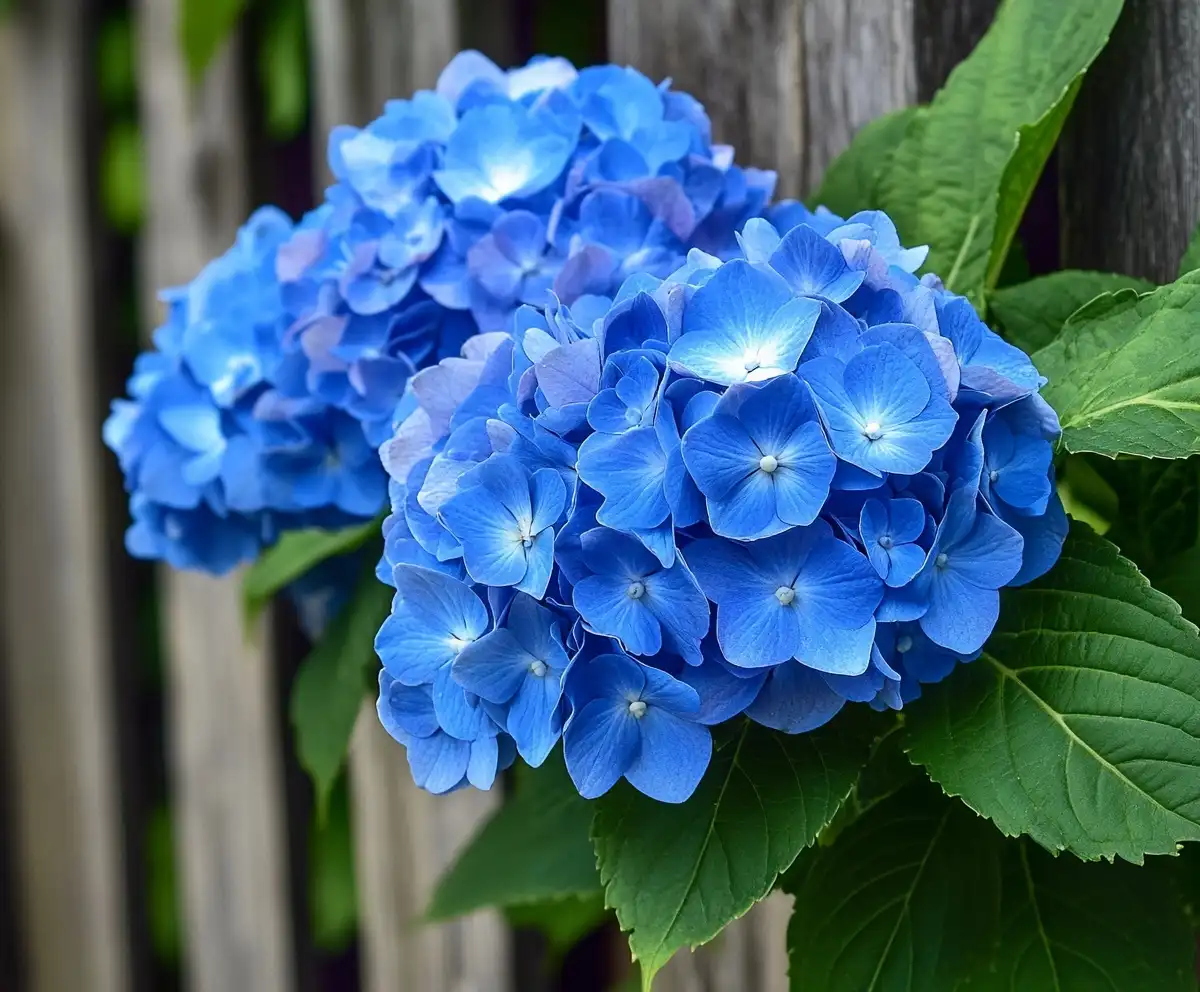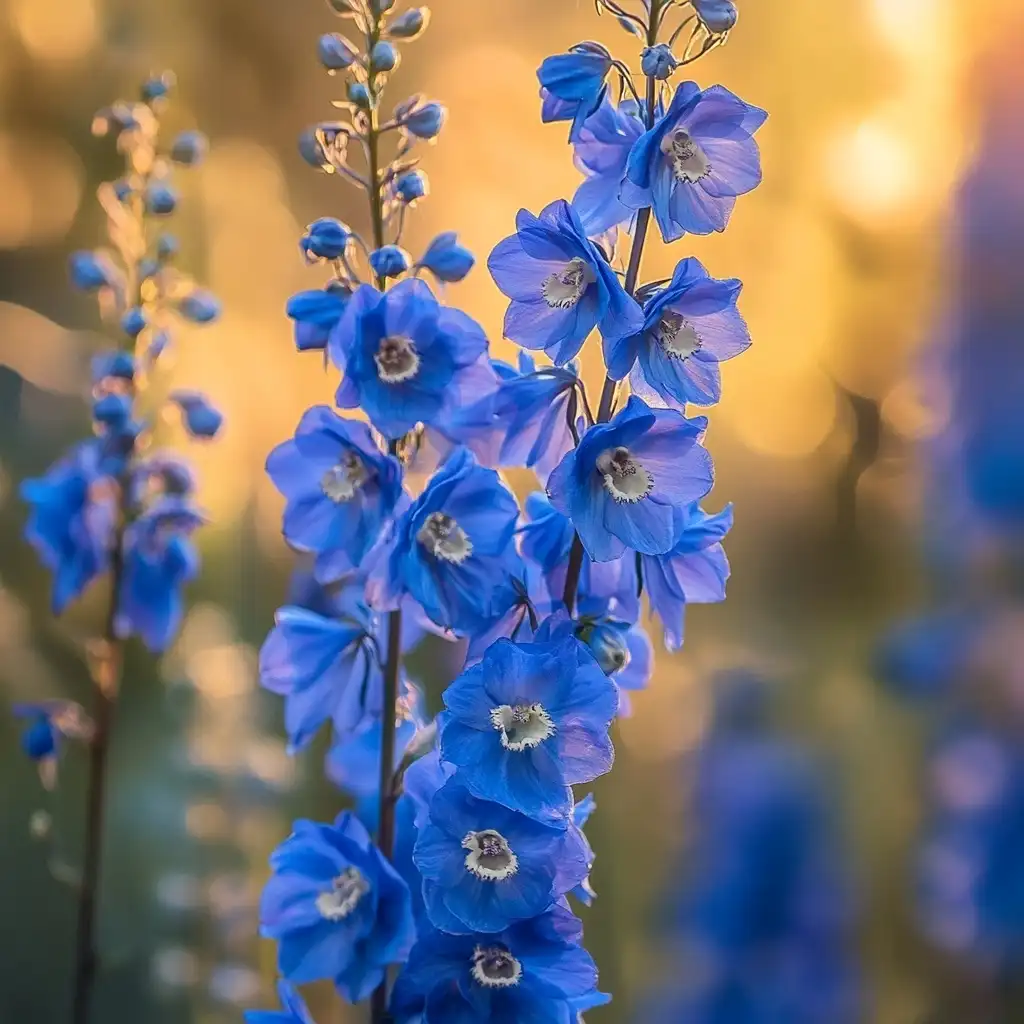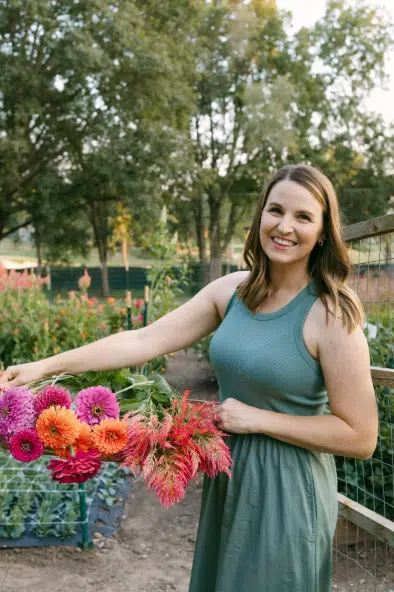Blue flowers add a calm, elegant touch that few other colors can achieve. Whether you’re styling a relaxed cottage garden or a more structured design, their hues—from sky blue to deep sapphire—create balance and depth. Surprisingly versatile, many blue bloomers thrive in diverse climates and settings. In this guide, we’ll cover 15 stunning blue flowers that not only elevate your space but also support pollinators and seasonal beauty.
Table of Contents
1. Delphinium
Delphiniums are towering beauties that bring a royal touch to any garden with their vertical spikes of vivid blue flowers. These perennial favorites are especially striking in the back row of flower beds, where their lofty height—sometimes reaching up to six feet—creates a dramatic backdrop.
Their blue tones can range from pale sky to deep indigo, and they bloom best when planted in well-draining soil with full sun exposure. While they may look delicate, delphiniums are surprisingly hardy when cared for properly. Stake taller varieties early in the season to protect them from wind damage, and deadhead the spent blooms to encourage a second round of flowering in late summer.
Plant them in clusters for an eye-catching display, and consider pairing with white daisies or pink foxgloves for a romantic, cottage-garden aesthetic.
2. Bluebell (Hyacinthoides non-scripta)
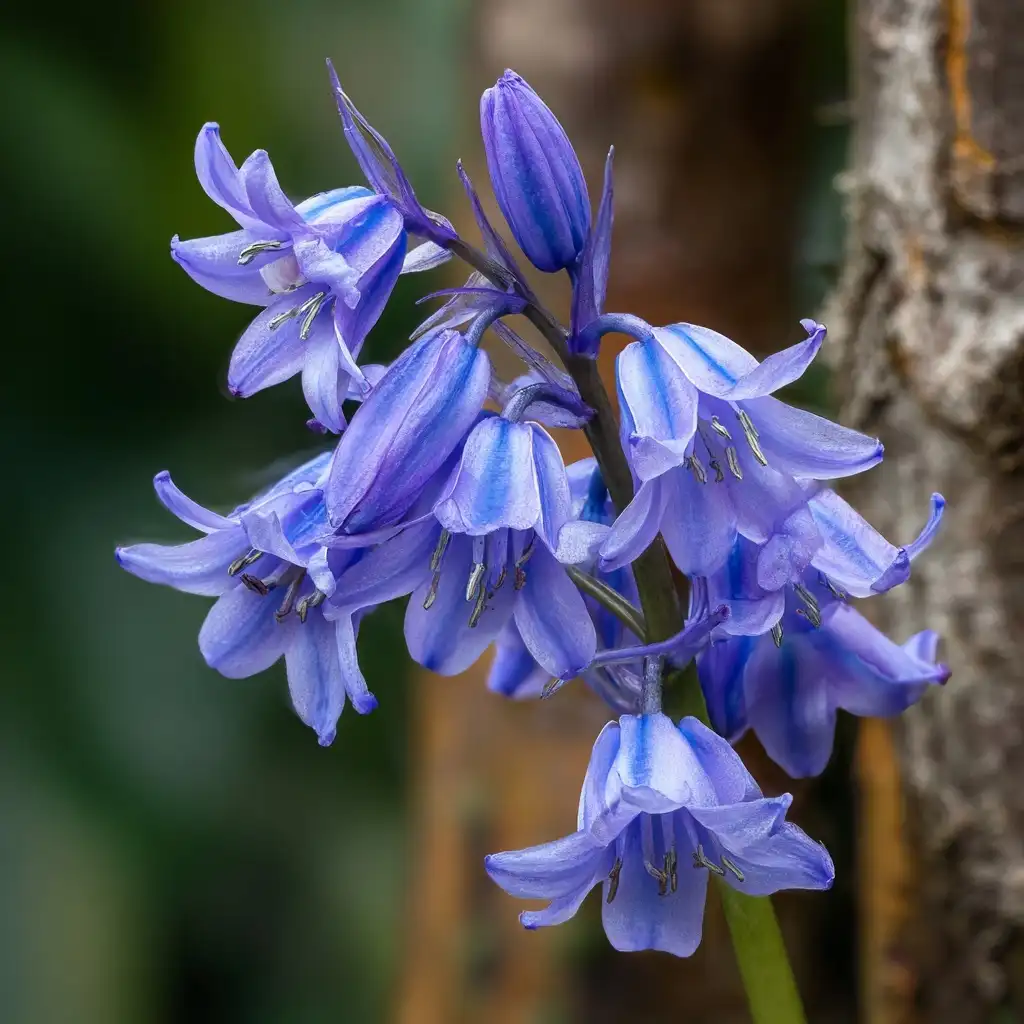
Few blue flowers create a magical woodland vibe quite like the graceful bluebell. Known for forming sweeping carpets of bell-shaped blooms, these delicate plants are ideal for shaded or partially shaded areas—perfect beneath trees or along the edges of garden paths.
Native to the UK and parts of Europe, bluebells prefer moist, well-drained soil and a cool climate. They typically bloom in mid to late spring, releasing a light, sweet fragrance that draws bees and early-season pollinators. Their nodding, tubular flowers range from violet-blue to pale azure, adding a soft, natural charm to informal garden settings.
Plant bluebell bulbs in autumn for the best results, and allow foliage to die back naturally after blooming to feed the bulbs for next year. Left undisturbed, they’ll happily multiply and return in greater numbers each season.
3. Blue Hydrangea
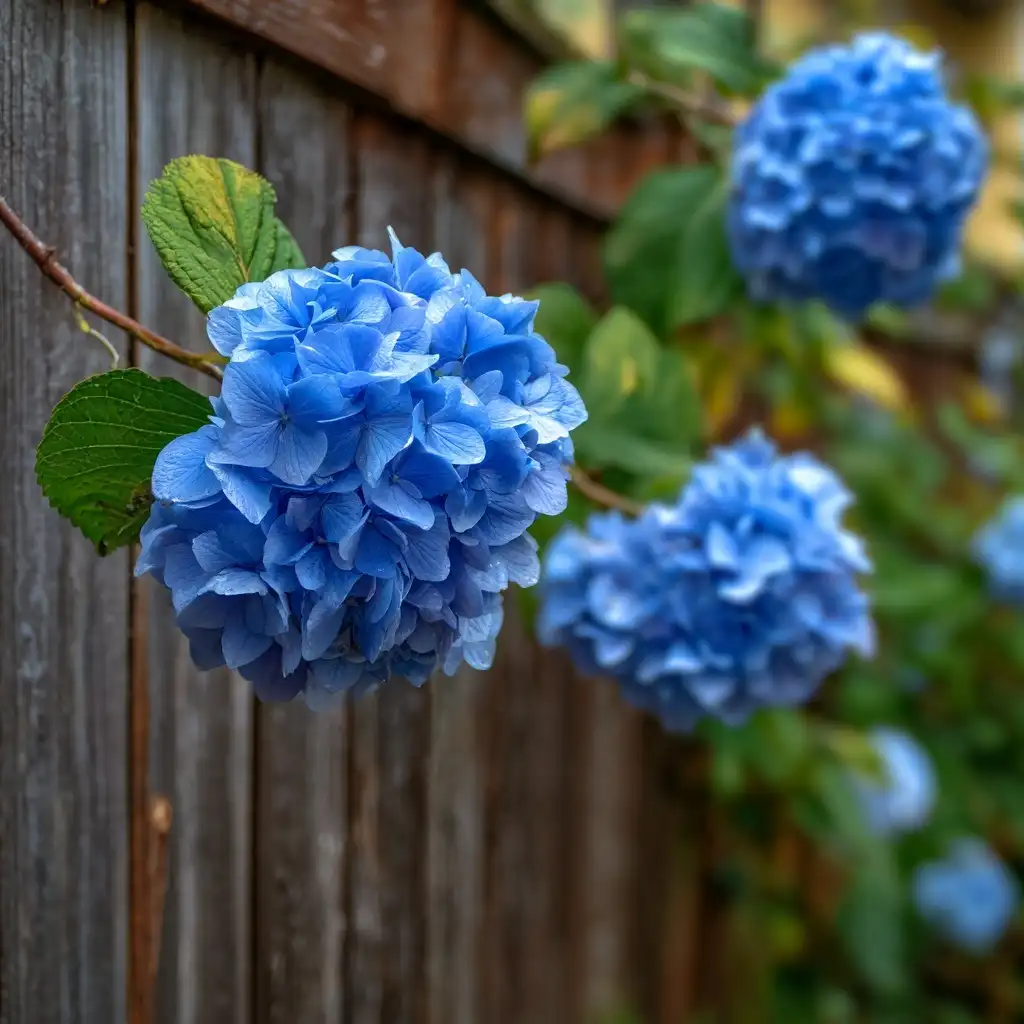
If you’re looking for blue flowers that make a bold, romantic statement, the blue hydrangea should be at the top of your list. These lush, mophead blooms can span several inches in diameter, creating a cloud of soft blue against vibrant green foliage.
Interestingly, the flower’s color is influenced by soil pH—acidic soil produces blue blossoms, while alkaline conditions shift them toward pink. For true-blue hydrangeas, amend your soil with aluminum sulfate and monitor the pH closely.
Ideal for partial shade, blue hydrangeas need consistently moist, well-drained soil and regular watering, especially during dry spells. They make excellent foundation plantings or focal points in borders, and their long-lasting flowers are perfect for cut arrangements.
Whether you grow them in-ground or in containers, blue hydrangeas lend elegance and fullness to garden spaces all summer long.
4. Agapanthus (African Lily)
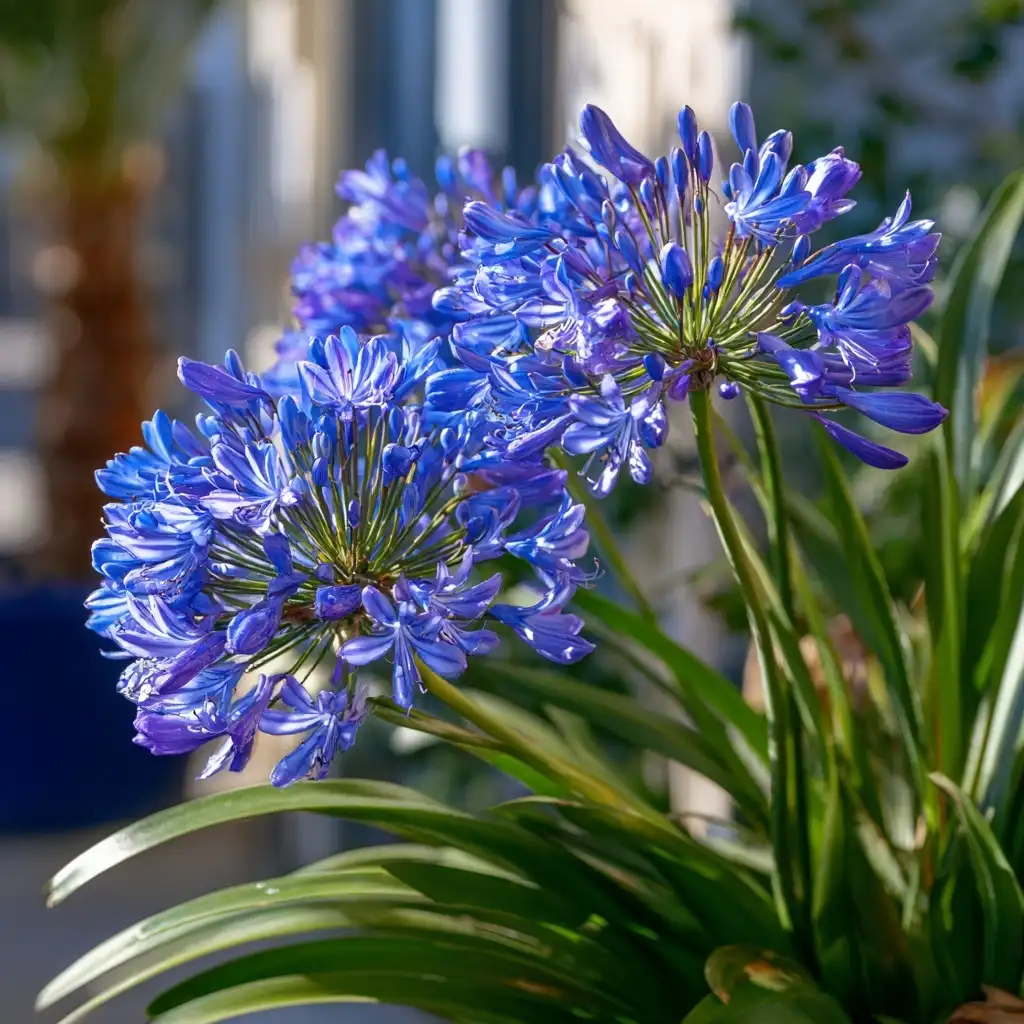
Agapanthus, often called African Lily, is a showstopper known for its tall, upright stems topped with globe-like clusters of blue flowers. These perennials are ideal for adding vertical interest and a modern edge to garden borders or containers.
Native to South Africa, agapanthus thrives in full sun and well-drained soil, and once established, it shows impressive drought resistance. Blooming from late spring into mid-summer, its vivid blue or violet-blue blossoms are a magnet for butterflies and bees.
To keep them thriving, water regularly during the growing season and mulch the roots to maintain consistent moisture. In colder climates, consider growing them in pots so they can be overwintered indoors or protected from frost.
With their architectural structure and vibrant hue, agapanthus adds both elegance and energy to any outdoor space.
5. Bluebell Creeper (Sollya heterophylla)
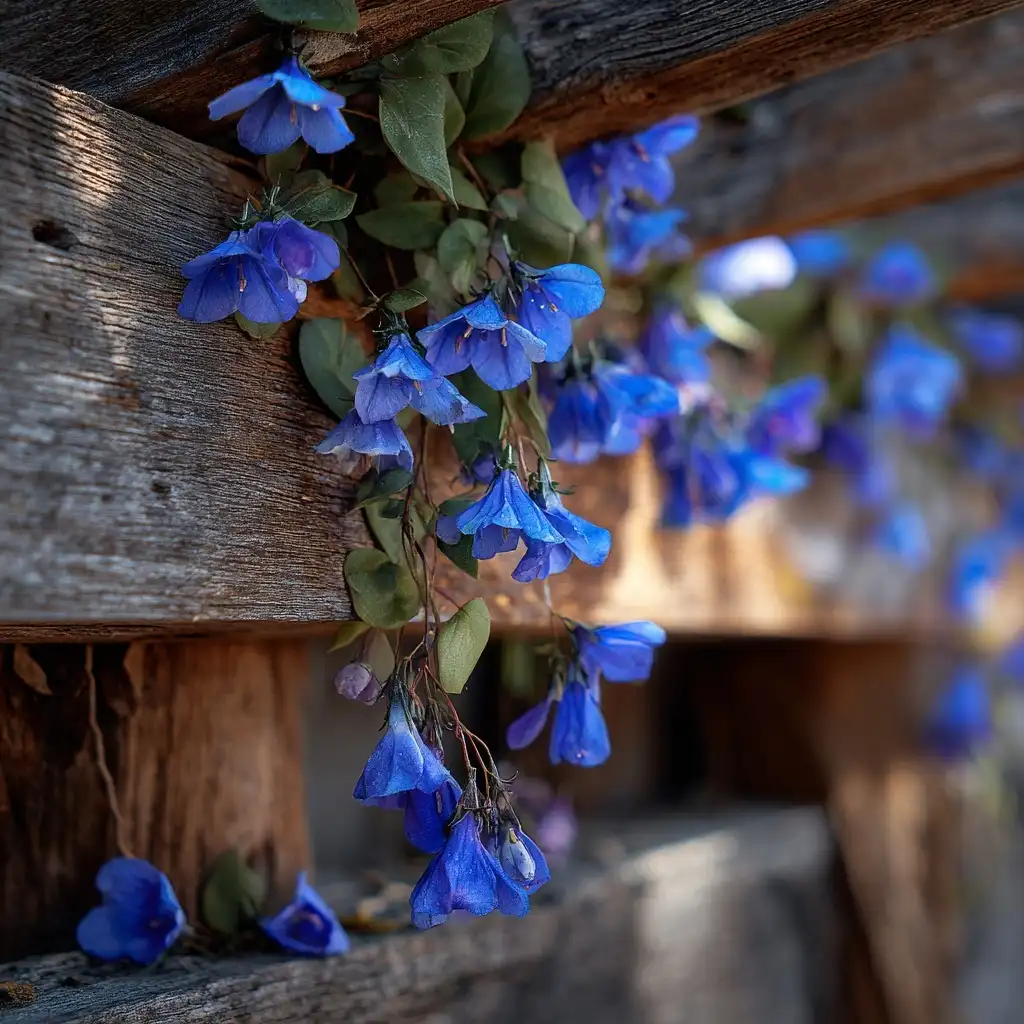
The Bluebell Creeper is a charming, fast-growing climber that produces clusters of small, bell-shaped blue flowers throughout the summer months. Native to Australia, this semi-evergreen plant brings a soft, cascading texture to arbors, fences, or hanging baskets.
Its dainty blue blooms contrast beautifully with the glossy green foliage, and although delicate in appearance, the Bluebell Creeper is quite hardy in mild climates. It prefers a sunny to lightly shaded spot with well-drained soil and benefits from regular watering during hot spells.
Gardeners love using this plant in vertical spaces or as a groundcover, thanks to its versatile trailing habit. While not frost-tolerant, it can be grown in containers and overwintered indoors if needed.
If you’re looking to soften hard edges or fill awkward garden gaps with graceful color, this flowering creeper is an excellent choice.
6. Cornflower (Centaurea cyanus)
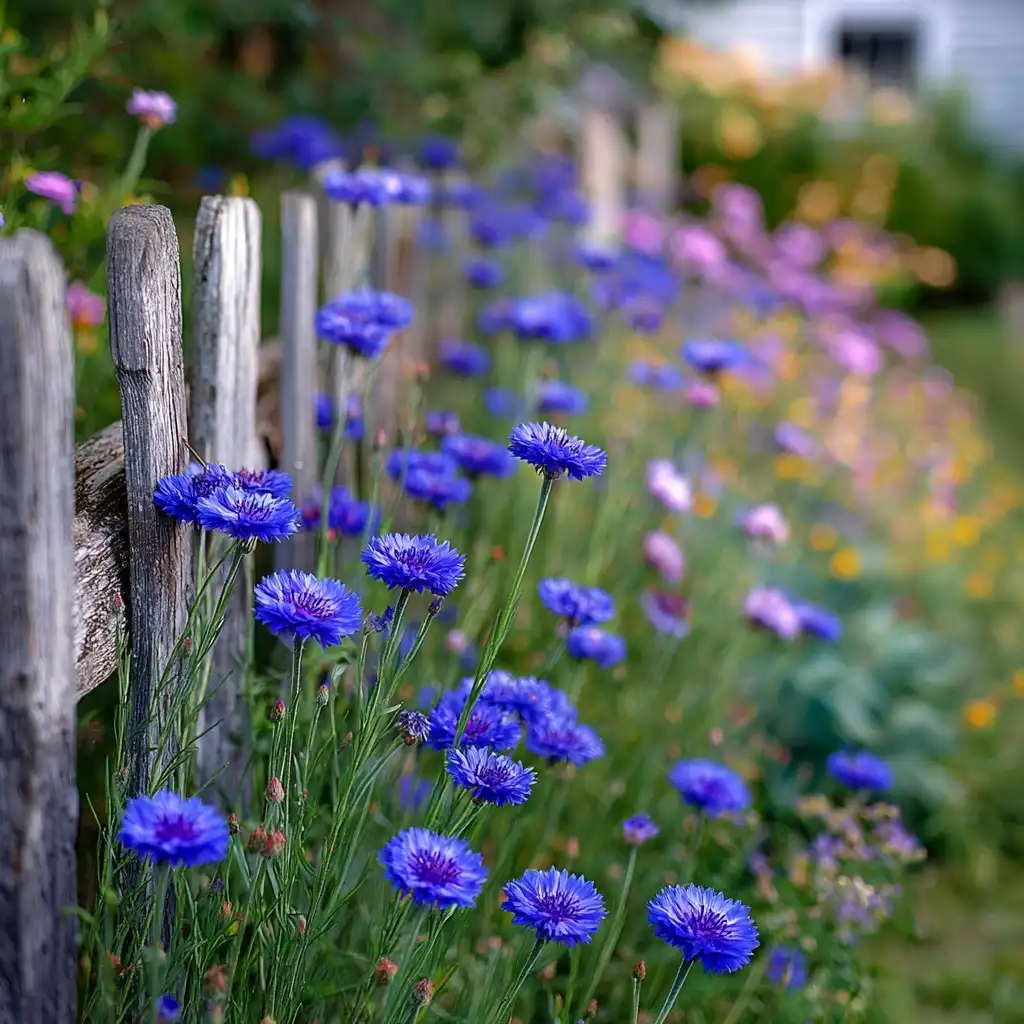
Cornflowers, also known as bachelor’s buttons, are classic cottage garden favorites known for their strikingly vivid blue flowers and carefree charm. Their ruffled, fringed petals sit atop slender stems, swaying gracefully in the summer breeze.
As annuals, cornflowers are easy to grow from seed and thrive in full sun and poor to moderately fertile soil. In fact, they often perform best in less pampered garden spaces, making them a go-to choice for wildflower meadows, pollinator patches, or rustic garden borders.
They bloom profusely from late spring through early summer and are highly attractive to bees and butterflies. Deadhead regularly to encourage extended flowering, and let a few go to seed if you’d like them to self-sow for next year.
Cornflowers pair beautifully with poppies and daisies, offering a cheerful, low-maintenance burst of true blue that enlivens any outdoor space.
7. Balloon Flower (Platycodon grandiflorus)
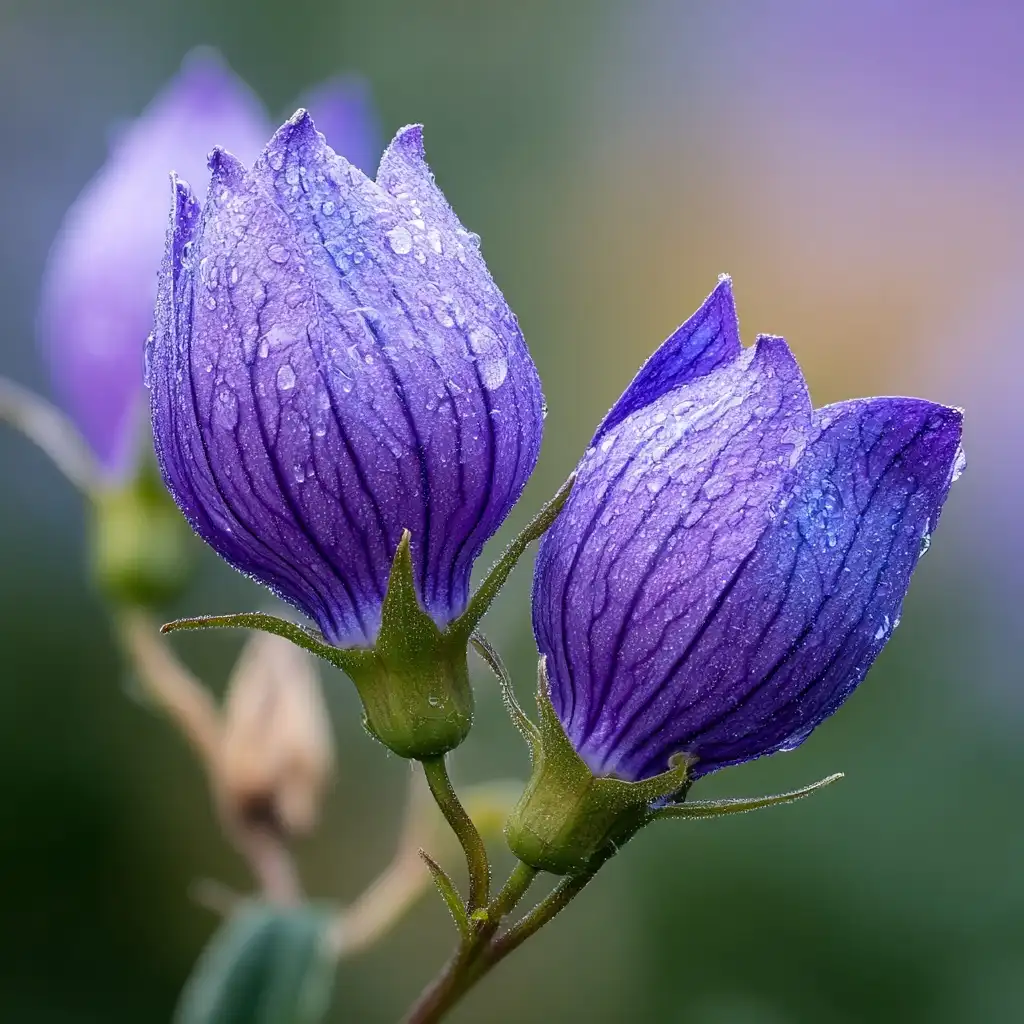
True to its name, the Balloon Flower begins as an inflated bud that swells like a tiny balloon before opening into a striking, star-shaped blue flower. This perennial is a delightful conversation piece and a dependable bloomer from mid-summer through early fall.
Balloon Flowers prefer full sun to partial shade and well-drained soil. They are notably low-maintenance and can tolerate a range of conditions, making them a favorite for gardeners of all experience levels. Once established, they’re both deer-resistant and drought-tolerant.
Plant them near the front of beds or along walkways to enjoy their charming transformation up close. Their deep blue petals and upright growth habit add vertical variety without overwhelming nearby plants.
Avoid disturbing the roots once planted, as they don’t transplant well. With minimal fuss, balloon flowers will reward you with years of vibrant blue charm.
8. Blue Star Creeper (Isotoma fluviatilis)
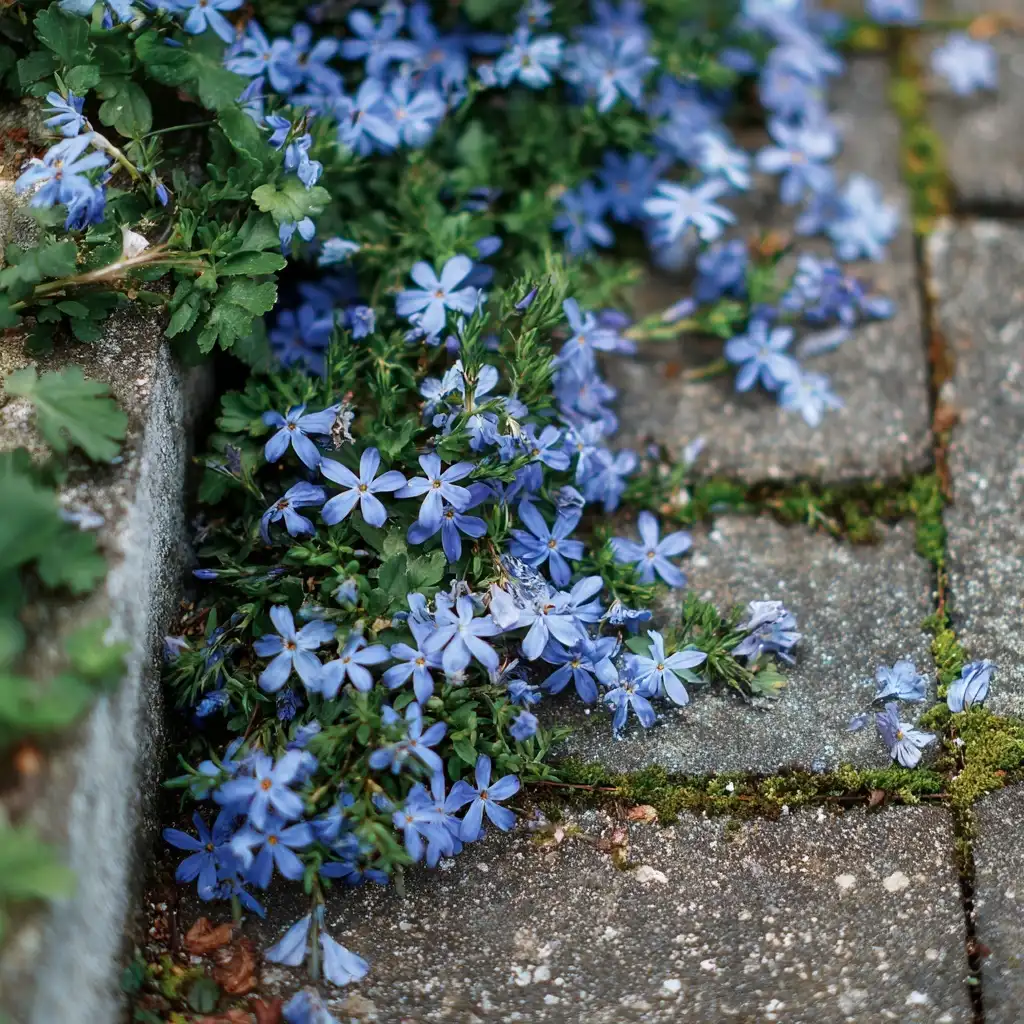
Blue Star Creeper is a petite but mighty perennial, adored for its ability to form a dense mat of tiny blue flowers that bloom from spring through early fall. Ideal for pathways, rock gardens, and between stepping stones, it’s one of the best low-growing options for both beauty and function.
This ground cover thrives in full sun to partial shade and appreciates moist, well-draining soil. Though delicate in appearance, it can handle light foot traffic and quickly fills in empty spaces, reducing the need for mulching or weeding.
Its soft blue blooms contrast beautifully against lush green foliage, offering subtle color without overpowering surrounding plants. Plus, it’s safe for barefoot walking and gentle enough to border patios or play areas.
If you’re looking for a flowering carpet that’s as tough as it is charming, Blue Star Creeper is a smart and stunning choice.
9. Lobelia
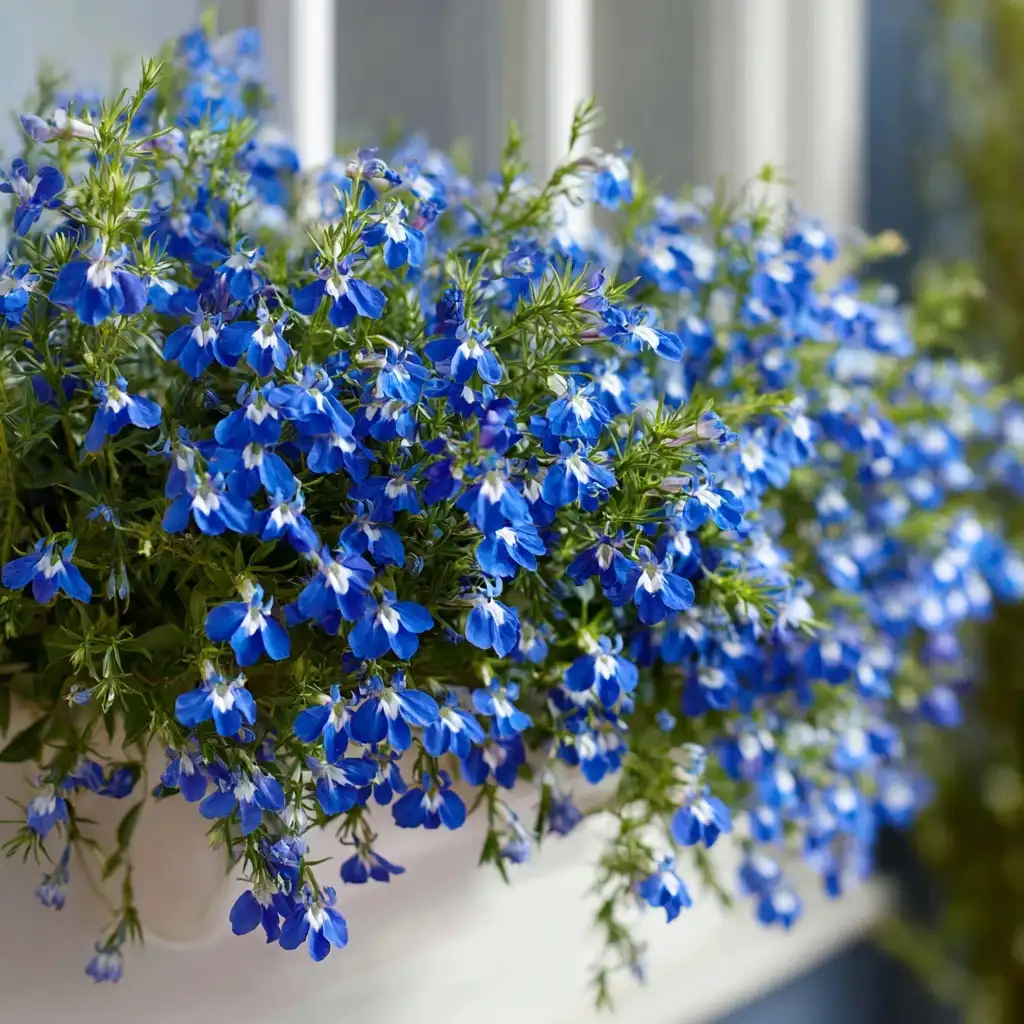
Lobelia is a beloved annual (or tender perennial in warmer climates) known for its vivid sprays of blue flowers that cascade beautifully from hanging baskets, window boxes, and garden borders. Its intense sapphire or cobalt tones make it a standout wherever it’s planted.
Thriving in cooler temperatures, lobelia prefers partial shade to full sun and moist, rich soil. It blooms best in the early summer months, though newer varieties can extend the display well into fall with regular deadheading and proper care.
This compact, trailing plant is a go-to choice for softening container edges and filling in garden gaps with a lush wave of color. It pairs exceptionally well with white alyssum, yellow calibrachoa, or silver foliage for a striking contrast.
Whether you’re brightening up a balcony or enhancing a shady garden bed, lobelia adds charm, softness, and true-blue brilliance.
10. Blue Flax (Linum perenne)
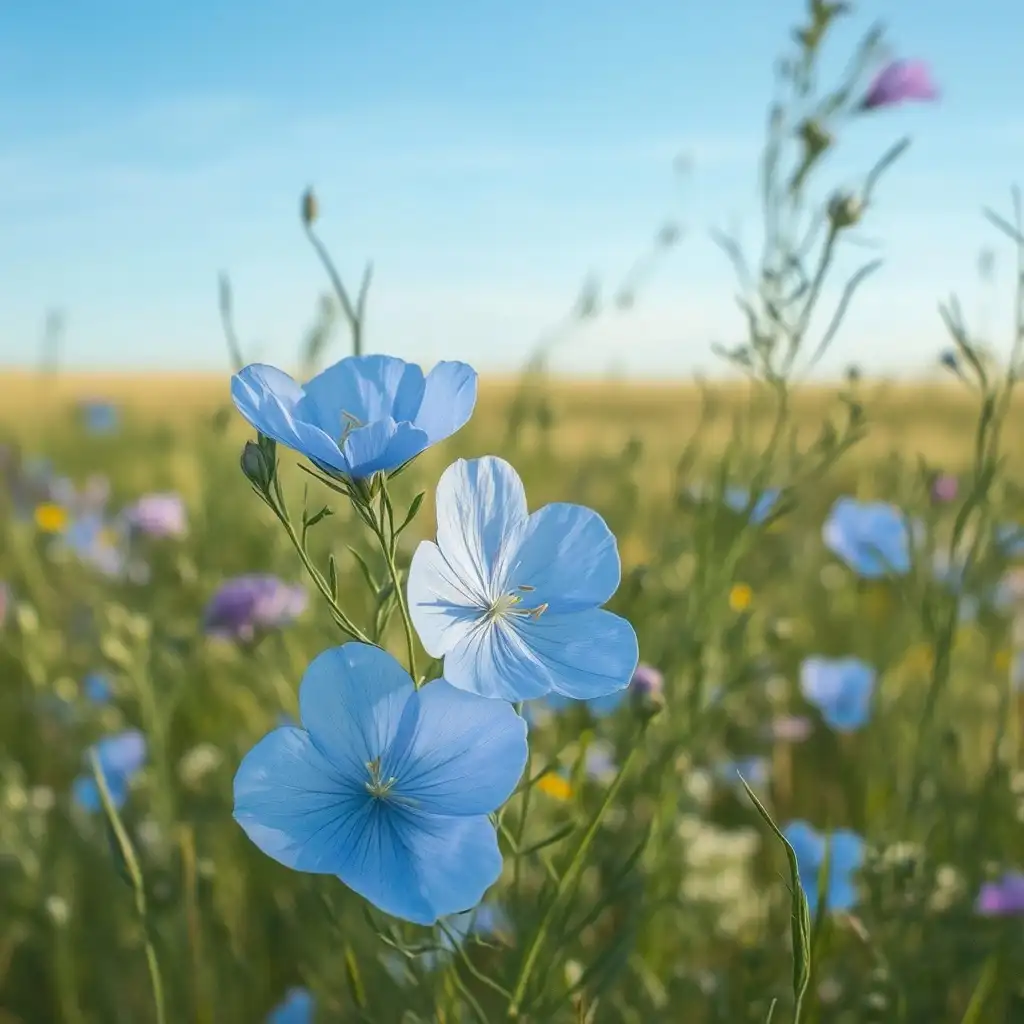
Blue Flax is a delicate perennial that brings movement and elegance to any garden. Its fine, wiry stems sway gently in the breeze, each topped with soft, cup-shaped blue flowers that open fresh each morning and fade by evening—only to be replaced by new blooms the next day.
Native to North America and Europe, Blue Flax thrives in full sun and well-drained soil. It’s drought-tolerant once established, making it an excellent choice for xeriscapes, cottage gardens, or wildflower meadows.
Though the individual flowers are short-lived, the plant blooms continuously for weeks, providing a soft, cloud-like appearance. Its feathery foliage adds texture even after flowering has slowed.
Scatter seeds directly into the soil in fall or early spring for naturalized drifts that look effortless and wild. Blue Flax is especially striking when planted in large clusters or along slopes where its airy presence can truly shine.
11. Periwinkle (Vinca minor)
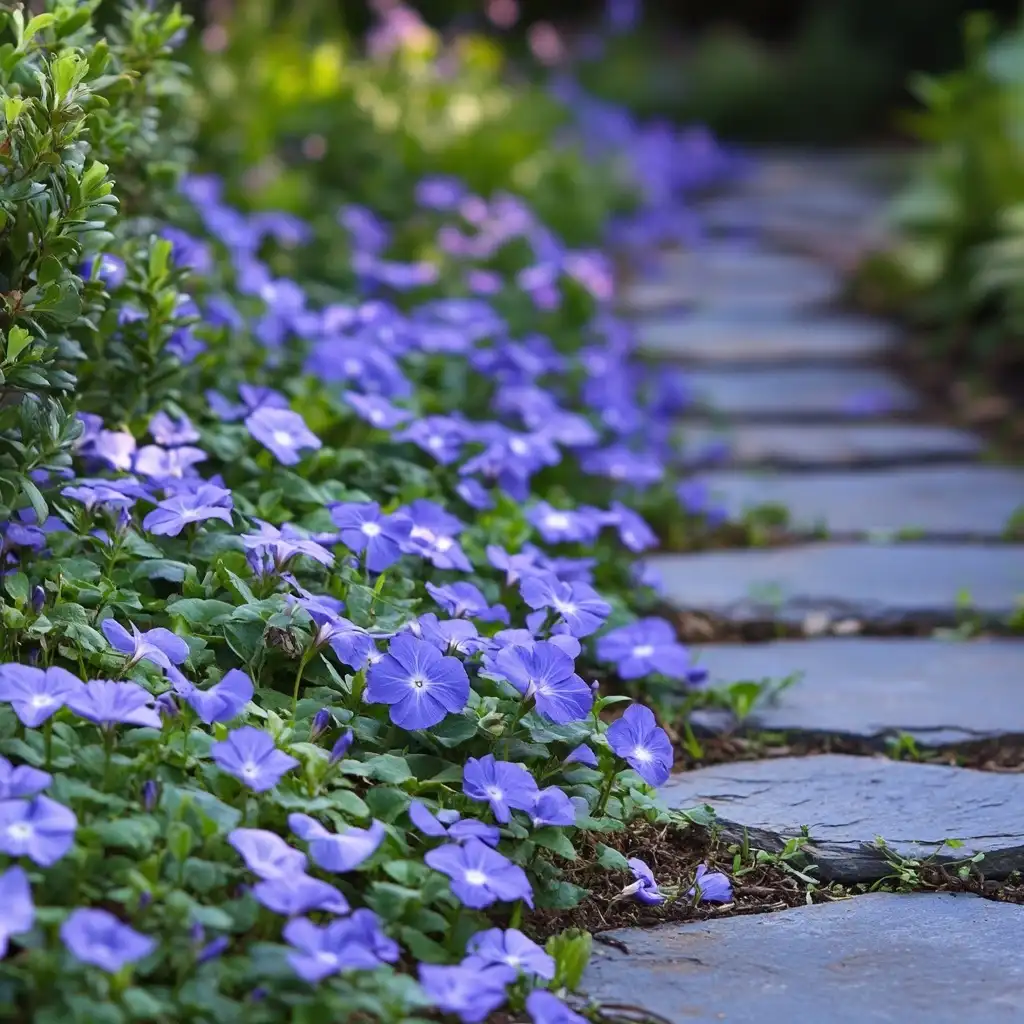
Periwinkle, or Vinca minor, is a hardy evergreen ground cover that spreads easily and produces dainty blue flowers in early spring. These low-growing plants are ideal for covering bare soil under trees, on slopes, or in shaded areas where grass and fussier flowers struggle to thrive.
The star-shaped blooms range from pale lavender-blue to deep violet and are accompanied by glossy, dark green foliage that stays attractive even when not in bloom. Once established, periwinkle is virtually maintenance-free and helps suppress weeds naturally.
It prefers partial to full shade and well-drained soil but can adapt to a variety of conditions. Its trailing stems root where they touch the ground, gradually filling in spaces to form a lush, carpeted effect.
Periwinkle is a great solution for tricky garden areas and adds a cool touch of blue where other flowers fade or fail.
12. Plumbago (Ceratostigma willmottianum)
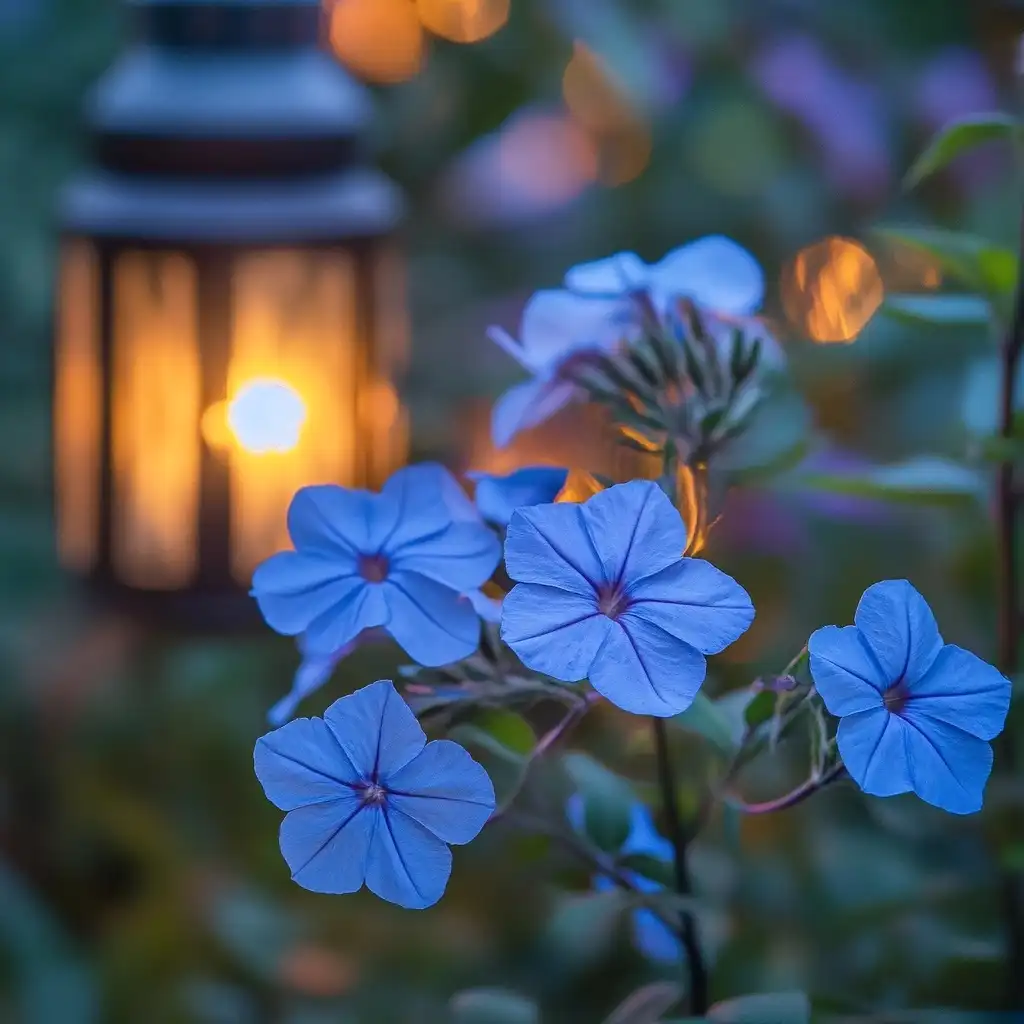
Plumbago is a showy perennial that brings rich clusters of sky-to-cobalt blue flowers to the garden from late summer into fall—just when many other plants begin to fade. It’s a brilliant way to extend the season of color and add a cool contrast to autumn’s warmer tones.
This tough yet elegant shrub thrives in full sun to partial shade and is highly adaptable, tolerating everything from poor soils to dry spells once established. Its foliage starts green but often turns a striking red or burgundy in the fall, creating a stunning backdrop for the continuing blooms.
Plumbago works well in borders, rock gardens, or as an informal low hedge. It can also be grown in containers where its color and texture can be more easily controlled and enjoyed.
For gardeners seeking late-season interest and lasting performance, plumbago delivers beautifully on both fronts.
13. Forget-Me-Not (Myosotis sylvatica)
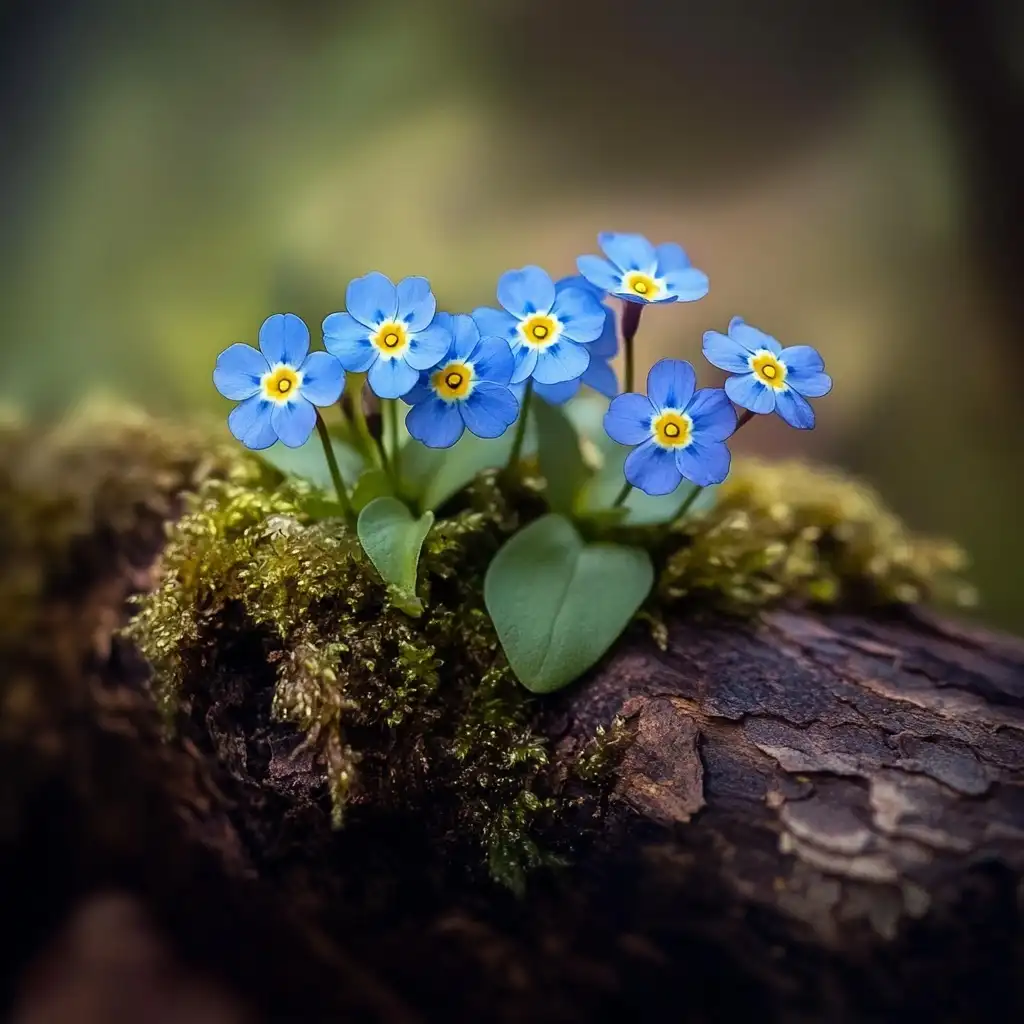
Few plants carry as much sentimentality and charm as the Forget-Me-Not. These petite blue flowers with cheerful yellow centers bloom in early to mid-spring, blanketing shaded or woodland gardens in a soft sea of color.
Native to temperate climates, Forget-Me-Nots prefer partial shade and moist, well-drained soil. They are ideal for naturalizing under trees, along borders, or beside ponds and streams where their delicate beauty complements the landscape.
These biennials readily self-seed, so even though individual plants are short-lived, they return year after year with minimal effort. Their light fragrance and massed effect make them a favorite companion to spring bulbs like daffodils and tulips.
Forget-Me-Nots are more than just a pretty face—they’re symbolic of remembrance and enduring affection, adding both emotional depth and natural beauty to any garden.
14. Chia Flower (Salvia hispanica)
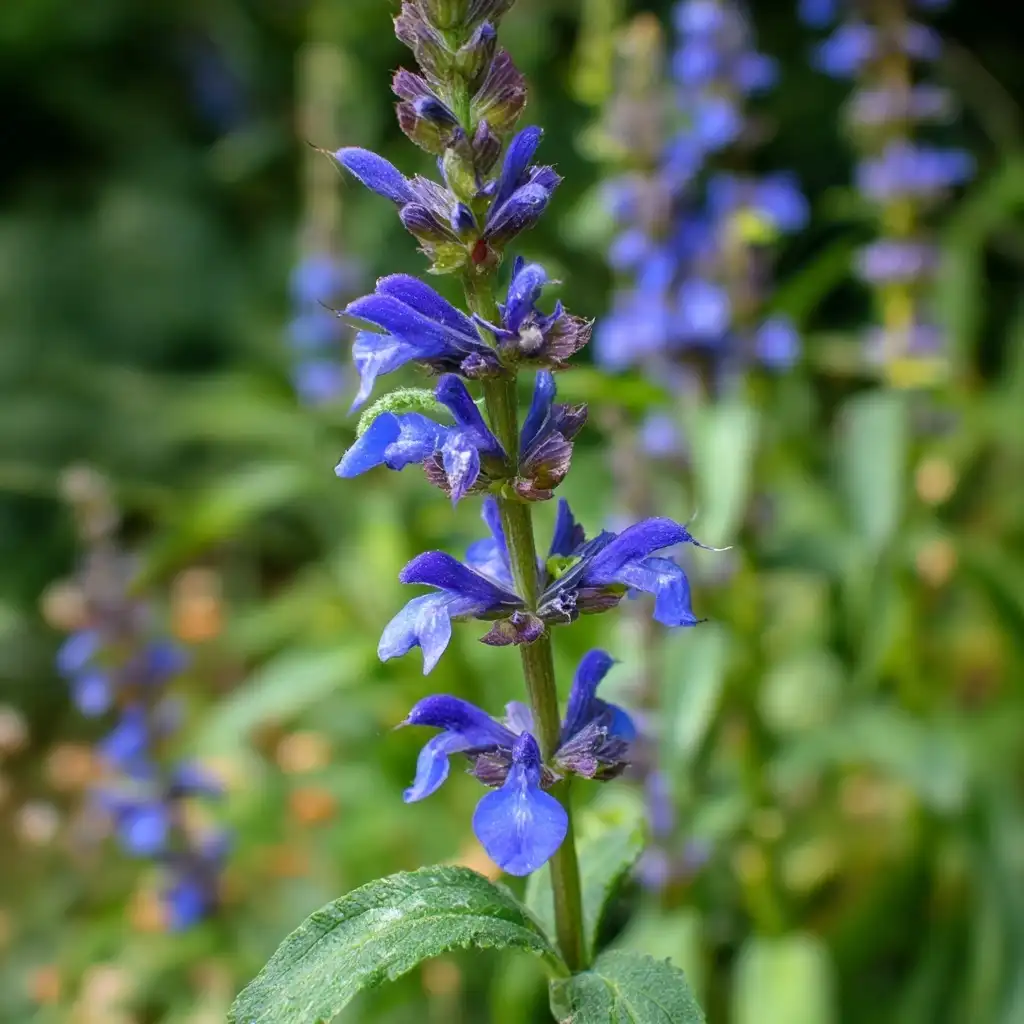
Best known for their nutrient-rich seeds, Chia plants also produce beautiful spikes of soft blue flowers that add both visual appeal and ecological value to your garden. These annuals, members of the sage family, are native to Central America and bloom from midsummer into fall.
Chia flowers thrive in full sun and well-drained soil, requiring minimal care once established. They are particularly popular in pollinator gardens, attracting bees, butterflies, and other beneficial insects with their nectar-rich blooms.
While the spiky blossoms may be modest compared to showier species, their fine texture and pastel blue color make them excellent filler plants in mixed beds or naturalized settings. Plus, you get the bonus of harvesting the seeds at the end of the season—perfect for smoothies or replanting.
Chia proves that blue flowers can be both beautiful and practical in the garden.
15. Blue Lotus (Nymphaea caerulea)
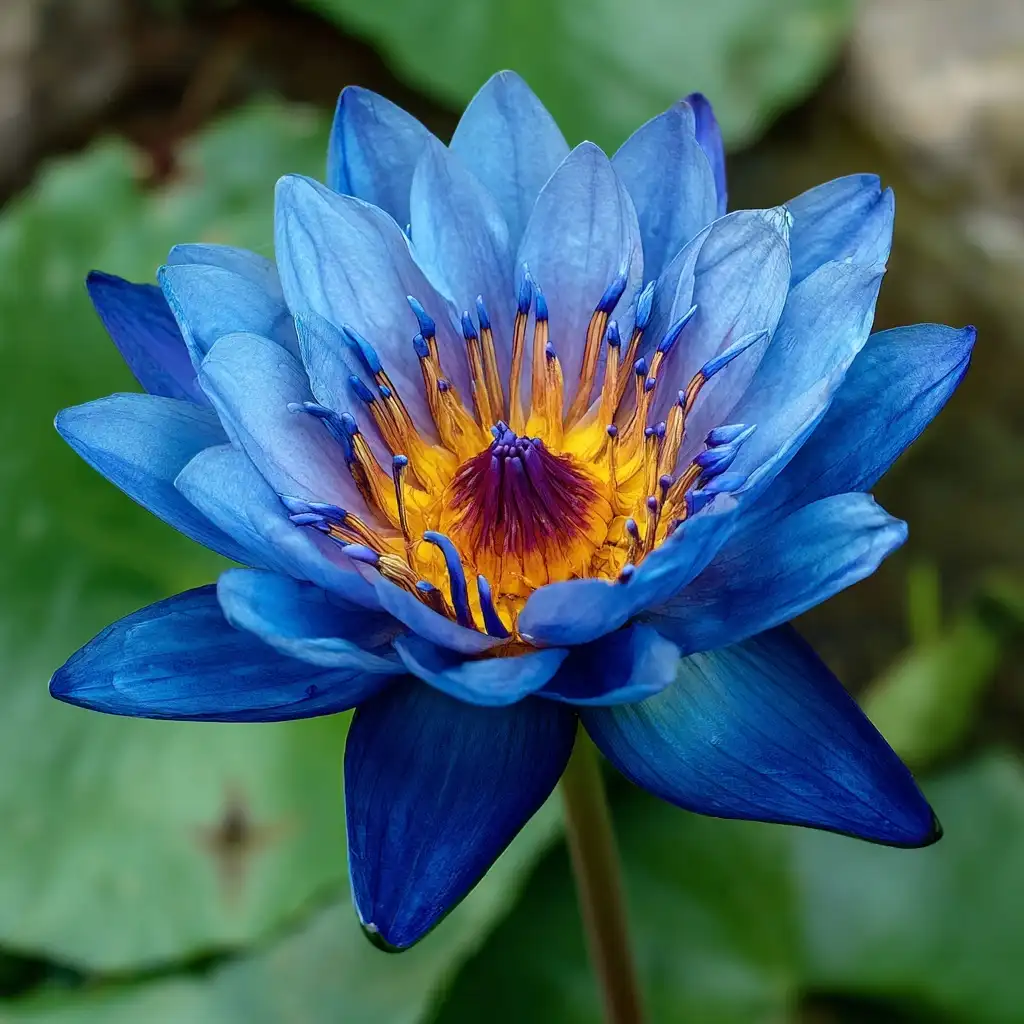
Exotic, elegant, and steeped in symbolism, the Blue Lotus is a stunning aquatic plant that graces ponds and water gardens with its large, starry blue flowers. Also known as the Egyptian Lotus or Sacred Blue Lily, it floats serenely on the water’s surface, opening each morning and closing at dusk.
This tropical water lily thrives in full sun and calm, shallow water. Its showy blue blooms sit atop round green leaves, creating a peaceful focal point that invites reflection and adds serenity to any outdoor space.
While it’s more sensitive to cold than hardy varieties, it can be grown in containers or tubs and overwintered indoors in colder regions. Regular feeding and clean water will keep this beauty blooming through summer and into early autumn.
Few plants elevate a garden quite like the Blue Lotus—with its tranquil beauty and gentle blooms, it transforms any pond into a meditative sanctuary.
FAQs About Blue Flowers
What do blue flowers symbolize in gardens?
Blue flowers often symbolize tranquility, peace, and inspiration. In garden design, they are used to create calming spaces and can serve as a visual “cool-down” between more vibrant colors.
Can I grow blue flowers in full shade?
Yes! While many blue flowers love sun, some—like Bluebells (Hyacinthoides non-scripta) and Periwinkle (Vinca minor)—thrive in partial to full shade. These are excellent choices for woodland areas or beneath trees.
Are there any blue flowers that attract pollinators?
Absolutely. Cornflowers, Chia flowers, and Lobelia are especially attractive to bees and butterflies. Adding them to your garden can boost biodiversity and support local ecosystems.
Do all blue hydrangeas stay blue?
Not necessarily. The flower color depends on the soil pH. Acidic soil (pH below 6) usually keeps hydrangea blooms blue. Alkaline soil turns them pink or purple. Use soil acidifiers like aluminum sulfate to maintain a blue hue.
What’s the easiest blue flower for beginners?
Cornflowers and Blue Flax are low-maintenance, quick to bloom, and grow well from seed—making them excellent choices for novice gardeners.
Conclusion
Bringing blue flowers into your garden isn’t just about adding a cooler hue—it’s about creating a space that feels grounded, restorative, and alive with seasonal interest. These blooms support pollinators, offer textural contrast, and extend your color palette from early spring to autumn. Whether you prefer low-maintenance groundcovers like Blue Star Creeper, show-stopping verticals like Delphinium, or pond-ready exotics like the Blue Lotus, there’s a blue-flowering plant to suit every style and setup—even in shaded garden spots or sunny patio containers.
Layer your selections thoughtfully to create an ever-changing display that looks good in every season and supports the health of your garden. Paired with features like flagstone paths or planted along hillside beds, blue flowers help turn ordinary spaces into peaceful garden sanctuaries.
🌿 Love gardening inspiration? Follow me on Pinterest for bold plant ideas, tips, and seasonal color!
More Posts
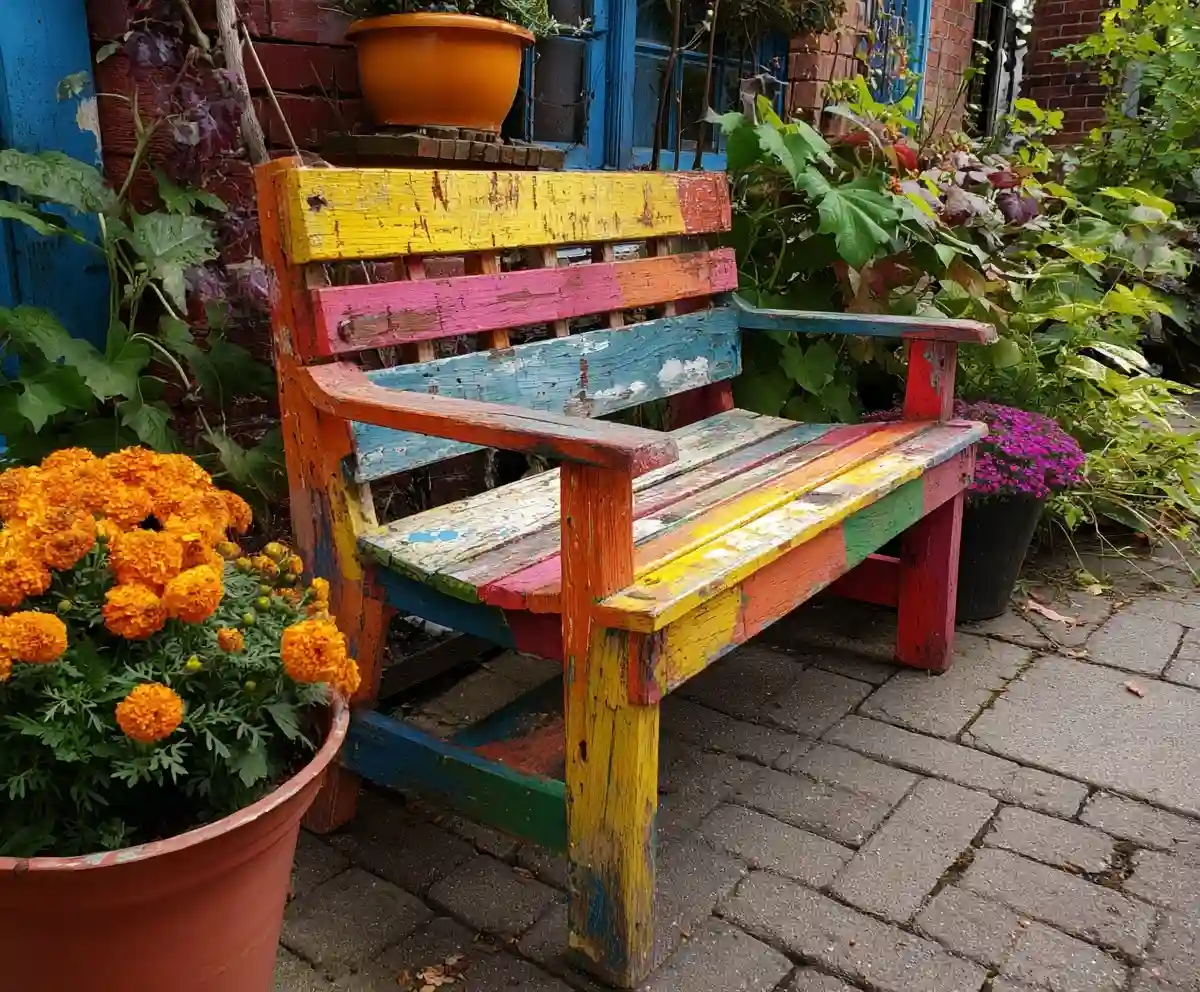
19+ Budget-Friendly Backyard Makeover Ideas
Backyard makeover ideas can turn even the most ordinary outdoor space into a warm, inviting retreat—without draining your wallet.
Read More →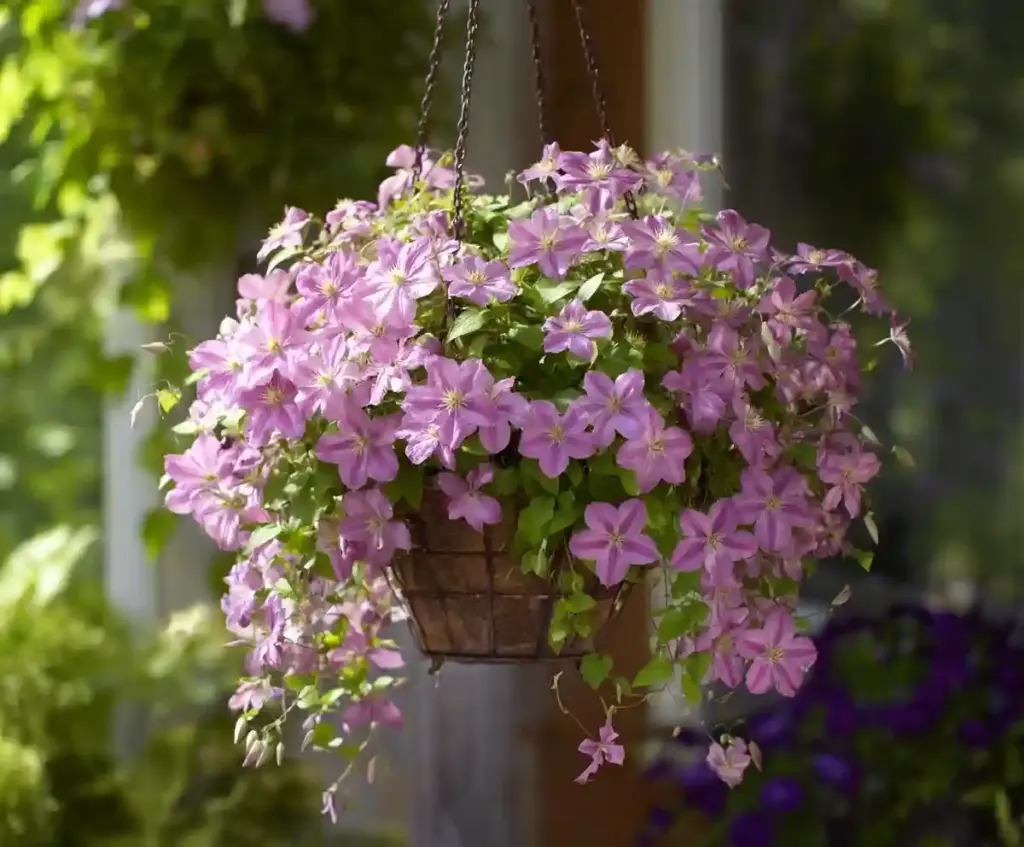
21 Stunning & Simple DIY Clematis Trellis Designs
DIY clematis trellis designs are a beautiful way to blend creativity with function in your garden.
Read More →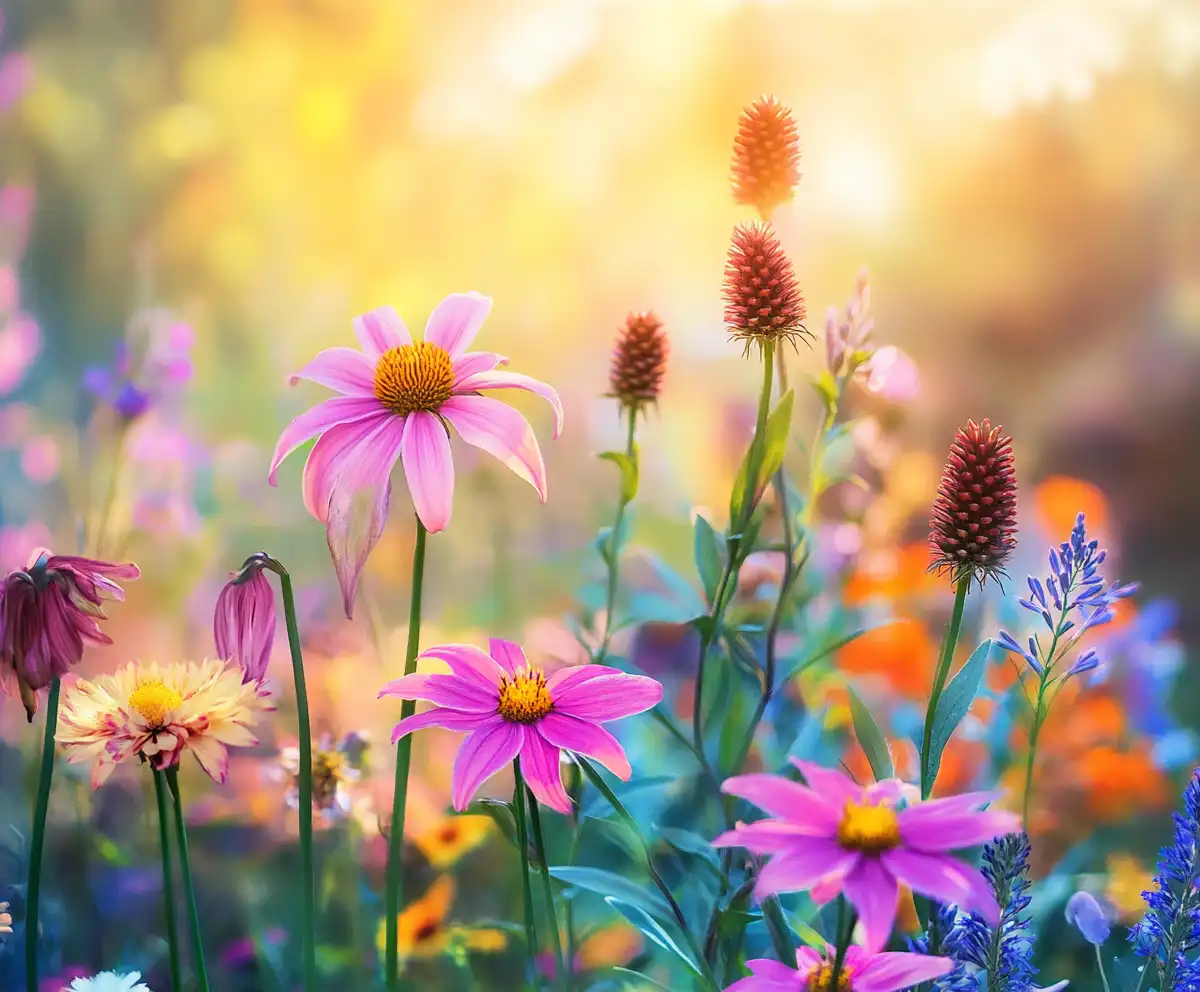
12 Full Sun Perennials That Bloom All Summer
Explore a selection of hardy perennials that flourish and bloom beautifully in full sun throughout the summer.
Read More →
Houseplants for Living Room
Find the perfect houseplants to brighten and purify your living room while adding a touch of nature indoors.
Read More →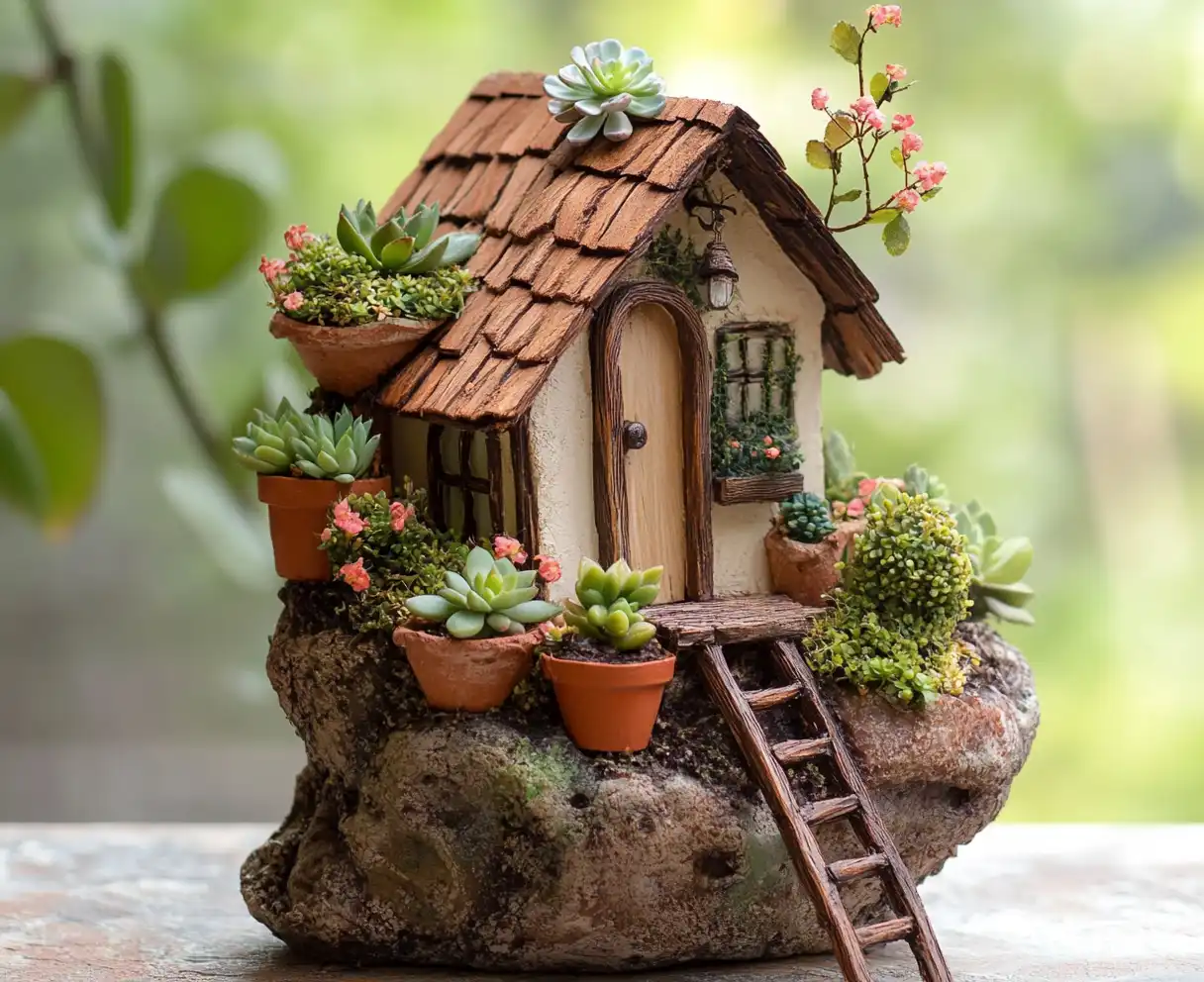
Backyard Play Area for Kids
Create a fun and safe backyard play area for kids with these inspiring design ideas and tips.
Read More →
Top Privacy Trees
Discover top tree varieties that provide natural privacy and enhance your outdoor space.
Read More →
